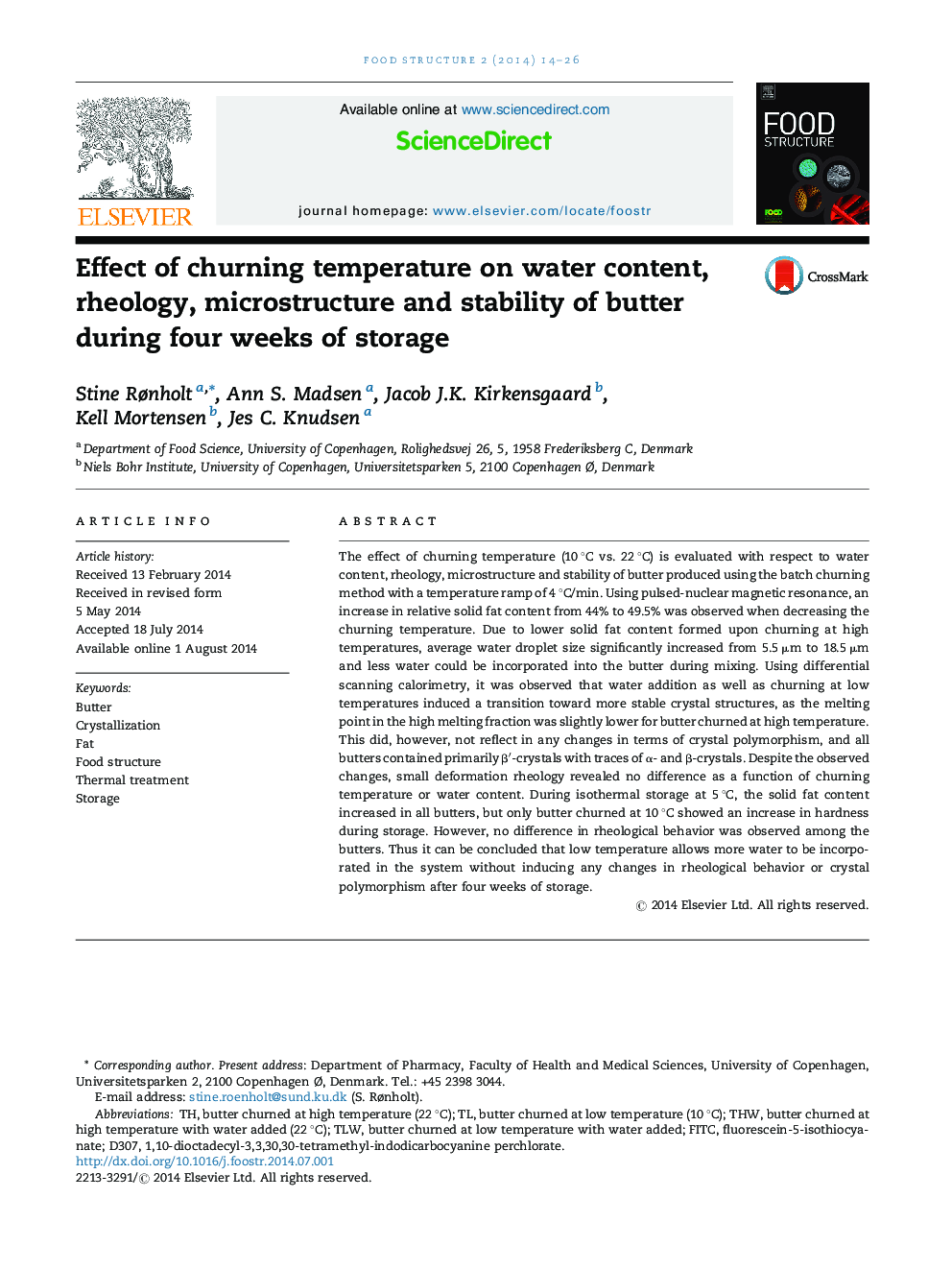| کد مقاله | کد نشریه | سال انتشار | مقاله انگلیسی | نسخه تمام متن |
|---|---|---|---|---|
| 19925 | 43146 | 2014 | 13 صفحه PDF | دانلود رایگان |
• Solid fat content decreases when increasing churning temperature from 10 to 22 °C.
• Increasing churning temperature increases water droplet size.
• A high solid fat content increases the ability to incorporate water into butter.
• Increasing churning temperature (10–22 °C) does not affect the water content.
• Rheological behavior is not affected by an increase in churning temperature.
• The effect of churning temperature on solid fat content remains during storage.
The effect of churning temperature (10 °C vs. 22 °C) is evaluated with respect to water content, rheology, microstructure and stability of butter produced using the batch churning method with a temperature ramp of 4 °C/min. Using pulsed-nuclear magnetic resonance, an increase in relative solid fat content from 44% to 49.5% was observed when decreasing the churning temperature. Due to lower solid fat content formed upon churning at high temperatures, average water droplet size significantly increased from 5.5 μm to 18.5 μm and less water could be incorporated into the butter during mixing. Using differential scanning calorimetry, it was observed that water addition as well as churning at low temperatures induced a transition toward more stable crystal structures, as the melting point in the high melting fraction was slightly lower for butter churned at high temperature. This did, however, not reflect in any changes in terms of crystal polymorphism, and all butters contained primarily β′-crystals with traces of α- and β-crystals. Despite the observed changes, small deformation rheology revealed no difference as a function of churning temperature or water content. During isothermal storage at 5 °C, the solid fat content increased in all butters, but only butter churned at 10 °C showed an increase in hardness during storage. However, no difference in rheological behavior was observed among the butters. Thus it can be concluded that low temperature allows more water to be incorporated in the system without inducing any changes in rheological behavior or crystal polymorphism after four weeks of storage.
Figure optionsDownload as PowerPoint slide
Journal: Food Structure - Volume 2, Issues 1–2, October 2014, Pages 14–26
